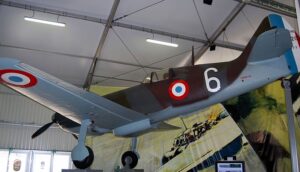The Daylight Bombing Campaign over Germany was conducted primarily by the United States Army Air Forces (USAAF) and later aided by the Royal Air Force (RAF). This strategic bombing campaign aimed to cripple Germany’s war machine by targeting its industrial infrastructure, transportation networks, and population centers during daylight hours.
The Daylight Bombing Campaign played a crucial role in weakening Germany’s ability to wage war and contributed significantly to the eventual Allied victory in Europe. By relentlessly targeting German industry and infrastructure, the Allied bombers forced the Luftwaffe to divert resources from the Eastern Front and other theaters, thereby diminishing Germany’s capacity to resist the Allied advance.
What Was The Daylight Bombing Campaign?
Initiated in 1942, the Daylight Bombing Campaign represented a shift in Allied bombing strategy, as previous efforts had primarily focused on nighttime raids due to the risks posed by German air defenses. However, advancements in fighter escort technology, particularly the introduction of long-range P-51 Mustang fighters, provided the Allied bombers with crucial protection against Luftwaffe fighters.
The campaign reached its peak in 1944 during Operation Pointblank, which aimed to systematically degrade German aircraft production, disrupt transportation networks, and undermine morale through sustained aerial bombardment. The USAAF’s Eighth Air Force and the RAF’s Bomber Command launched massive raids against key industrial targets, including aircraft factories, oil refineries, ball-bearing plants, and transportation hubs, often with devastating results.
The Role of the Daylight Bombing Campaign
Despite the Allied bombers’ improved defensive capabilities, the Daylight Bombing Campaign was not without its challenges. The German Luftwaffe employed formidable anti-aircraft defenses, including flak guns and fighter aircraft, which exacted a heavy toll on Allied bomber crews. Losses were especially high during raids deep into German territory, such as the infamous bombing of Schweinfurt and Regensburg in August 1943, which highlighted the vulnerability of unescorted bomber formations.
The sacrifices made by Allied bomber crews during the Daylight Bombing Campaign were immense, with thousands of aircraft lost and tens of thousands of airmen killed, wounded, or captured. However, their bravery and determination helped pave the way for the liberation of Europe and the eventual defeat of Nazi Germany. Today, the Daylight Bombing Campaign stands as a testament to the strategic importance of air power in modern warfare and the extraordinary sacrifices made by those who served in the Allied air forces
All The Aircraft Used in the Daylight Bombing Campaign
Let’s delve into the diverse array of planes employed by the Allied air forces as they undertook the monumental task of bombing strategic targets over German-occupied territory during daylight hours. From the iconic Boeing B-17 Flying Fortress to the versatile Consolidated B-24 Liberator, join us as we explore the aircraft that played a pivotal role in shaping the outcome of the war through precision bombing and strategic air power.

Avro Lancaster
The Avro Lancaster is a WW2 heavy bomber aircraft manufactured in the United Kingdom and was used by the RAF during wartime.

Boeing B-17 Flying Fortress
The Boeing B-17 Flying Fortress is an American four-engined heavy bomber developed for the United States Army Air Corps (USAAC) in the 1930s.

Consolidated B-24 Liberator
The Consolidated B-24 Liberator was an American heavy bomber aircraft featuring a highly efficient high aspect ratio Davis wing.

North American P-51 Mustang
The North American P-51 Mustang is an American long-range, single-seat fighter and fighter bomber used during World War II.










